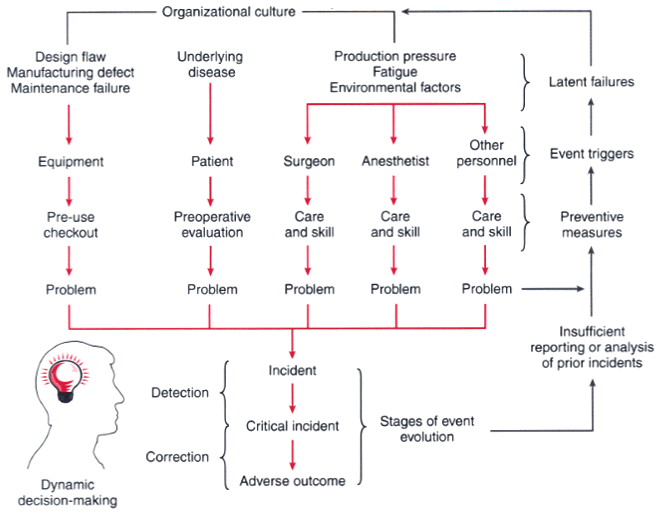 |
 |
Figure 83-3
Chain of accident evolution in anesthesia. As in Reason's
model (see Fig. 83-13
),
underlying latent failures (and the organizational culture) predispose to the triggering
of an accident sequence by equipment, the patient, the surgeon, the anesthesiologist,
and other personnel. This sequence can be prevented by prophylactic measures such
as preoperative evaluation and treatment of patient diseases or pre-use checkout
of life support equipment. Once a problem occurs, it may remain self-limited or
it may evolve further down the accident chain. Using dynamic decision-making, the
anesthetist must detect and correct the problems that do occur at the earliest possible
point in the chain of evolution. The interruption of the accident chain is made
more difficult when there is tight coupling within the system, when there are multiple
interacting problems, or when problems disrupt recovery processes. Efficient use
of incident analysis may make it easier in the future to prevent or interrupt problem
evolution. (Redrawn with modification from Gaba DM, Fish KJ, Howard SK:
Crisis Management in Anesthesiology. New York, Churchill Livingstone, 1994.)

 |
